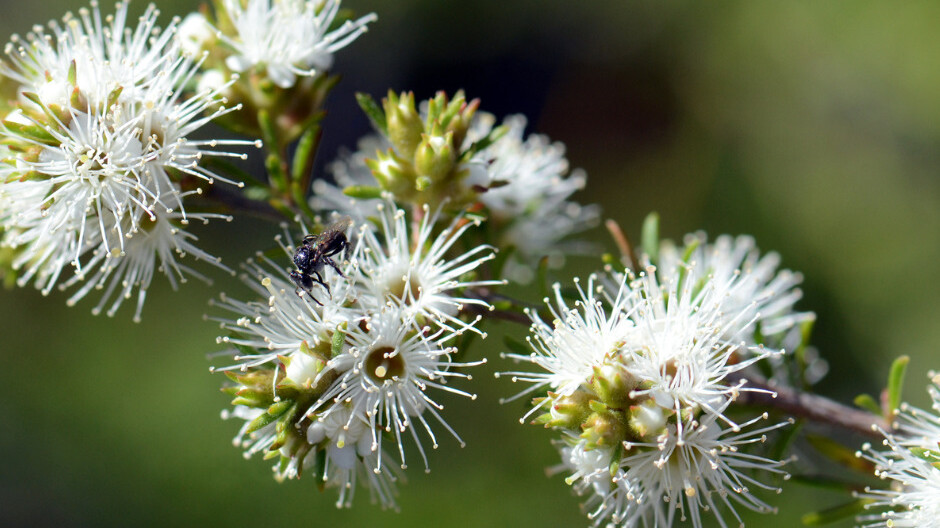Scaevola – groundcover species
What a popular garden plant this has become, and quite rightly so. The splendid fan flowers that give the genus its common name can be absolutely vivid, ranging in hue from white to blue and purple (rarely yellow).
There are about 72 Australian species of Scaevola, of which about 40 occur naturally in Western Australia.
The groundcover species have proven themselves pretty tough, making a great en masse display. It also does well in hanging baskets and pots, and just dotted through a garden.
Cultivation
Most species require good drainage and full sun. They are easily propagated from cuttings, which is just as well, as some are prone to dying suddenly at the end of their flowering season (especially the most floriferous plants). Take cuttings during the growing season, to have replacement plants on hand if necessary.
Purchase plants while in flower, which is spring and summer, to ensure selection of plants with the best flowers as they can be quite variable.
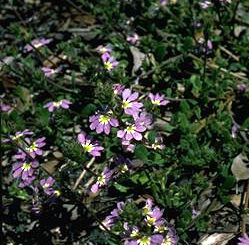 S. aemula
S. aemula
(from South Australia, Victoria and New South Wales)
This prostrate plant (to about 30cm high but variable) has spreading stems and wedge-shaped leaves in bright green. There are now many hybrids of this popular garden plant on the market, including: ‘Purple Fanfare’ which has large flowers for most of the year; ‘Super Clusters’ has mauve pink flowers; and ‘New Blue’ which has more vivid blue flowers.
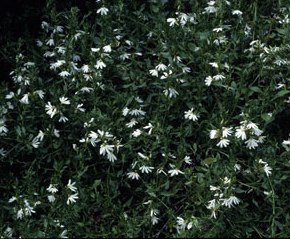 S. albida
S. albida
(from South Australia, Victoria, New South Wales and Queensland)
Reported to be more reliable than S. aemula, this species is also a spreading plant. This plant has obovate to elliptical leaves that are usually toothed. The fan-shaped flowers can be white or blue and it flowers for most of the year. Very hardy but will not tolerate bad drainage.
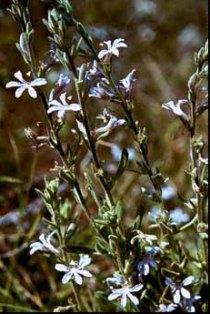 S. anchusifolia – Silky scaevola
S. anchusifolia – Silky scaevola
(from Western Australia)
Although quite prostrate, this species can grow to about 80cm in height. The pale blue to purple flowers of this species appear in loose terminal spikes that are up to 15cm long during late winter and spring.
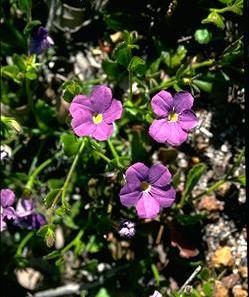 S. calliptera – Royal Robe
S. calliptera – Royal Robe
(from Western Australia)
This plant grows very well in Perth but is not reliable on the east coast of Australia because of the more humid conditions. It’s more of an erect herb, growing to about 40cm high, with large purple flowers that have a yellow throat. It flowers from spring to early sumer. Good container plant.
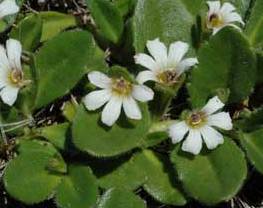 S. hookeri
S. hookeri
(from Victoria, Tasmania and New South Wales)
Very small ground hugging plant that needs a damp situation in full sun or partial shade. This species roots at the nodes along stems and spreads about 30cm. The flowers are off white and are produced in summer. As well as cuttings this plant can also be divided.
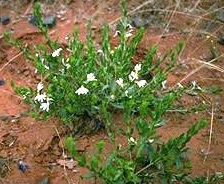 S. humilis
S. humilis
(from Northern Territory, Queensland, New South Wales and South Australia)
This little perennial can develop a suckering habit but does not spread as vigorously as the better forms of S. aemula. It is in fact quite similar to S. aemula but everything about it is generally smaller. It produces pale blue flowers in the leaf axils through most of the year.
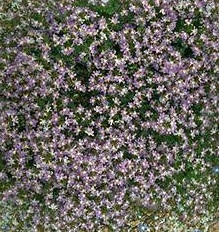 S. microphylla
S. microphylla
(from Western Australia)
This species can have prostrate or arching branches and grows to about 30cm high and about 80cm wide. Blue flowers are produced in spring and summer. This plant is excellent for a sunny site with well-drained soil.
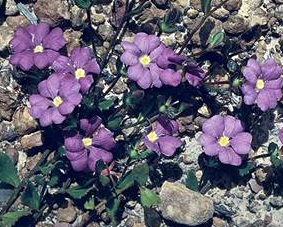 S. striata – Royal Robe
S. striata – Royal Robe
(from Western Australia)
A stunning pink-flowered cultivar ‘Pink Perfection’ is now grown with great success. This species grows to about 80cm high and it suckers. This one is particularly good as a hanging basket plant.
Information sources
Wrigley, J.W. & Fagg, M., 2003, Fifth edition, Australian Native Plants, published by Reed New Holland.
Banner Photo – Elaine Shallue
Additional photos courtesy of the Australian National Botanic Gardens
Scaevola aemula – Photographer: Greig, D.
Scaevola albida – Photographer: Lyne, A.
Scaevola calliptera – Photographer: Fagg,M.
Scaevola hookeri – Photographer: Fagg, M.
Scaevola humilis – Photographer: Donaldson, S.
Scaevola microphylla – Photographer: Humphreys, F.
Scaevola striata – Photographer: Humphreys, F.
Related Articles:
Wildflower gardens – What’s the buzz about?
In the quest for sustainable and environmentally conscious practices, gardening enthusiasts and nature lovers alike are turning to a time-tested…
Indigenous plants for reducing insect decline
A steep drop in insect numbers since the 1970s has environmentalists very concerned. While we might not miss some species - mosquitoes and termites…


